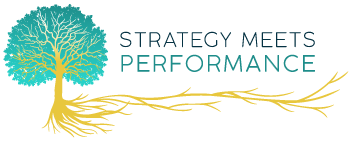I recently came back from a business trip and was so surprised to find that my formerly green Texas Lilac plants had bloomed into a beautiful lavender color. There they were, greeting me in my driveway, inviting my inspiration, just in time for my Spring blog. I started thinking about how many things we nurture that actually turn into the outcome we had envisioned…and how nice it is when the ideas we plant today do actually bloom tomorrow.
My clients have also shared with me some of the great outcomes they’ve seen in their business. And it all started with a seed of an idea:
- The client who wanted to improve his marketing practices finally took the financial risk to hire a consultant and sales are up!
- The client who developed the vision for where she wanted her company to go, started communicating it to her staff at every turn from company meetings to one-on-one talks. She does not think it’s a coincident that they had their best year following this change
- The leader who wanted to change the locations of two employees in order to improve sales is seeing positive financial results and more engaged staff as well as new ways of doing things in each office
- The client who wanted to incorporate exercise into her life who started walking almost every day at lunch time…has lost weight, feels better and now preaches daily walks to others
They all had a vision of how things could be, they planted the seeds, nurtured the vision and are now seeing their hopes blooming.
With Spring upon us, it is a good time to think about what you would like to see happen in YOUR life. By developing and communicating your vision, you can dramatically increase the chance of it occurring.
You might be wondering: “Isn’t it hard to craft a vision?” or “Aren’t vision statements just for CEO’s and people in HR?”
The answer is No and No.
Having a vision for our life, either personal or professional, is simply a plan for where we want to focus our actions and thoughts. With a plan, we are then able to make small, daily choices that will take us closer to our vision, which will help us discover and maximize our potential. Choice is the key word here because we are often faced with conflicting options about our work and our personal lives and it can be difficult to keep choosing the path towards our vision. In the book “How We Choose to Be Happy: The 9 Choices of Extremely Happy People,” the authors emphasize the importance of choice in our life. They interviewed people throughout the world to discover the choices they made that lead to their happiness and found nine themes:
- Intention: Make an active choice to being happy
- Accountability: Refuse to blame others or view yourself as a victim
- Identification: Look deep within and find out what makes you happy (not what people say should make you happy)
- Centrality: Make those things that bring you happiness central to your life
- Recasting: Transform stressful problems and trauma into a source of meaning and emotional energy
- Options: Be open to new possibilities and adopt a flexible style to your life’s journey
- Appreciation: Stay in the present and view each experience as something unique
- Giving: Share yourself with friends, family and your community without expecting anything in return
- Truthfulness: Make a choice to be honest with yourself and others
Modify any of the 9 things that you may not be doing and reflect on what you would like to see differently in your life. This will allow you to craft a vision for what you’d like in the next month, quarter, year and further. These choices are within YOU. If you hold yourself accountable for what you want, you won’t have anyone else to blame…what a concept!
Can You See Your Vision?
Create it physically: When we physically create symbols of our vision, they become clearer to us. Here are some ideas to physically bring your vision forward:
- Write a list of 100 things you’d like to accomplish in your life (personal and professional). This list should include things you already have accomplished
- Create a vision board. It sounds like a 5th grade art project, I know! However, there is a power that comes from assembling images of things you want
- Talk about your vision with those closest to you
Create it mentally:
- Can you visualize it? What would it look/sound/feel like?
- What are two things you need to get there?
- How much time can you invest in this vision?
- Who will be on your “board of advisors” also known as your support team?
- How will you know you’ve been successful?
By thinking about your choices, recasting areas that didn’t go your way, or walking through these physical and mental exercises, you can start to plant the seeds and nurture your vision. Remember, the seeds you plant today will need some nurturing and daily attention, but can pleasantly surprise you when they bloom before your eyes.




